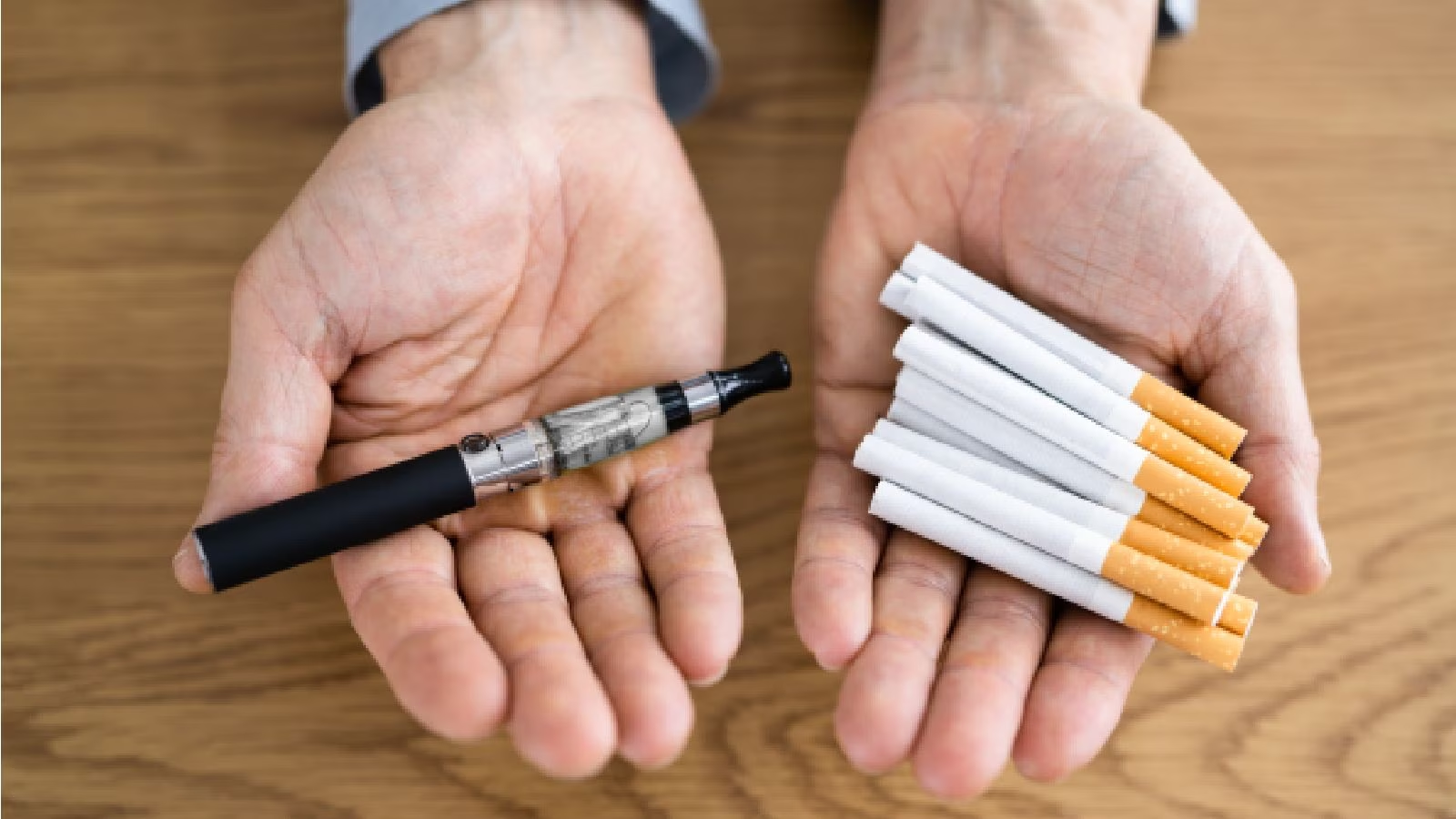
What are the reasons for people choosing to vape instead of smoking cigarettes for nicotine? Is there a specific reason for the complexity of vaping?

A great many people choose vaping over smoking because it has been shown to be an effective means of smoking cessation and harm reduction.
When it comes to the complexity, the chemical reaction caused by vaping is actual less complex than that of smoking a cigarette. The process of vaping involves heating a liquid (e-liquid) containing nicotine, flavorings, and other chemicals to create an aerosol. This process uses an electrical coil to heat the liquid to a much lower temperature compared to smoking, typically around 200-250°C. The primary chemical reaction that occurs during this process is the vaporization of the e-liquid into an aerosol. This doesn’t involve combustion, which limits the complexity and number of chemical reactions. And while cigarettes contain thousands of ingredients, e-liquid typically contains between 5 and 10 components.
The combustion involved in smoking cigarettes or other tobacco products generates tar and carbon monoxide as byproducts, two of the most harmful parts of cigarette smoke. And if the process of combustion isn’t completed, it can result in additional chemical reactions which create things like formaldehyde and nitrosamines. So the process of vaping is actually much simpler on a chemical level than smoking cigarettes.


